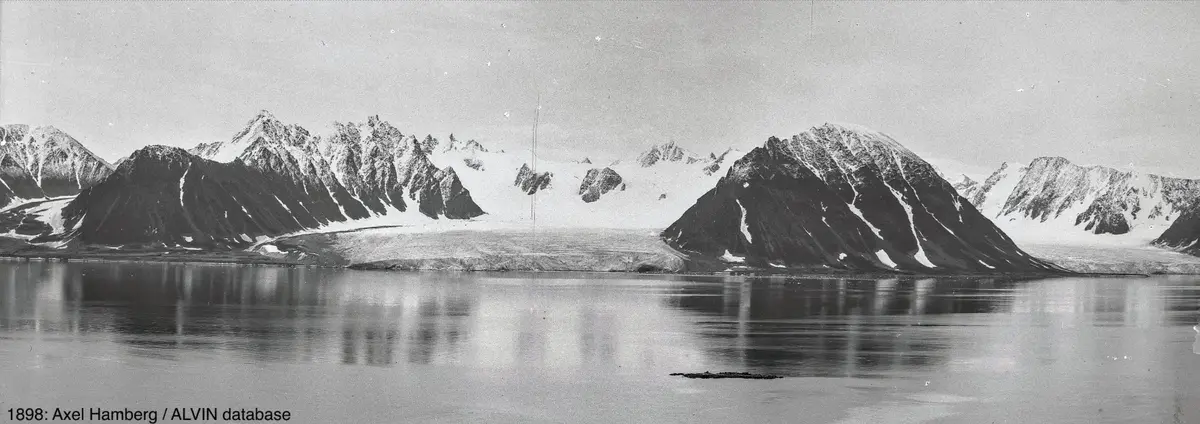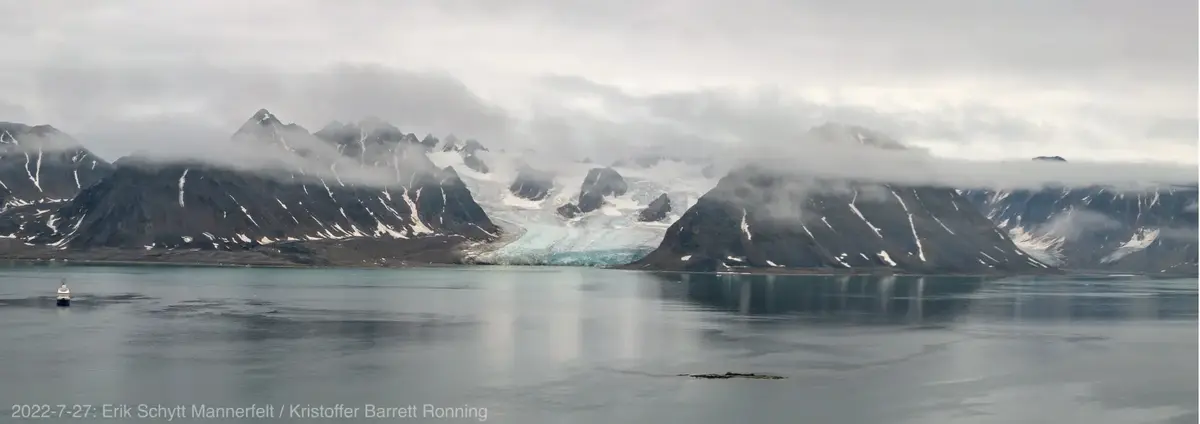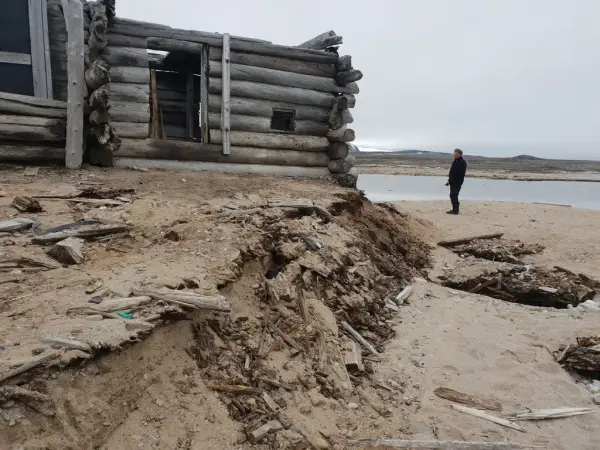Facts about climate change in Svalbard
| 10°C increase in average temperature in the northeast | Warmer ocean and less sea ice | Spring arrives 14 days earlier than before | More precipitation — both rain and snow | 5°C warmer in Longyearbyen during the summer | Milder winters, with more snow and more frequent rain |
Permafrost
Permafrost is defined as soil, rock, and sediments that have been frozen for at least two consecutive years and do not thaw during the summer. On Svalbard, permafrost extends from the surface downward — in some places only a few meters deep, while in others it can be several hundred meters thick. During the summer, the top layer of soil thaws; this is called the active layer. Because the climate has become warmer and wetter, the active layer thaws deeper than before and stays thawed for a longer period.
There are no plants or trees on Svalbard to hold the soil firmly on slopes, so when the soil thaws, it slowly slides down the mountainsides. When permafrost thaws deeper and for a longer time, it leads to larger and faster changes in the landscape, such as landslides and increased erosion from rivers and the sea.
Glaciers
A glacier forms when more snow accumulates than melts during the summer. When the climate warms, glaciers become smaller. More rain also leads to increased melting. This has caused especially the coastal glaciers, such as Longyearbreen, to shrink significantly over the past decades, and some glaciers have disappeared entirely. On some of the large glaciers, which are located at high elevations where more precipitation falls as snow, a future climate with more precipitation may cause them to grow. However, the loss of coastal glaciers means the landscape looks very different from just a few decades ago. If fewer glaciers end in the fjords, this will also negatively affect algae and animals that depend on these habitats.
Frambreen 1898-2022
Foto: Erik Schytt Mannerfelt/ Kristoffer Barrett Ronning


The ocean
Much of the climate change is linked to the ocean becoming warmer. This leads to less sea ice, which in turn causes the ocean to become even warmer. The reduction of sea ice in the fjords negatively affects plant and animal life. There are fewer habitats for zooplankton and polar cod that depend on sea ice for food and shelter. This leads to less food for the ringed seal, which feeds on polar cod. Additionally, ringed seals rely on sea ice to create dens where they give birth to their pups. The ringed seal is one of the main prey species for the polar bear, and therefore scientists believe there will be fewer polar bears in the future.
The species known as the bearded seal, which was previously relatively rare on Svalbard, has now become more numerous because it needs access to open water.
The warming ocean is also causing a phenomenon called Atlantification — the life in the Arctic Ocean is becoming more like that of the Atlantic Ocean. One of the most important prey species for the large colonies of seabirds, whales, and fish are copepods. These are small crustaceans that live freely in the ocean in vast numbers. The copepods that replace the previous species in a warmer ocean are much less nutritious. This means, for example, that the abundant seabird, the little auk, has to catch many more copepods to get the same amount of nutrition, resulting in fewer offspring. In recent decades, we have seen a significant decline in some seabird species because of this.
Some seabird species, such as the puffin, have become more numerous as the ocean has warmed. We also now see more blue mussels, bladderwrack seaweed, and fish species like cod, haddock, herring, and capelin along the west coast of Svalbard. This comes at the expense of other species, such as polar cod.
On land
On land, longer summers and higher temperatures mean that the growing season for plants is extended, and flowering occurs earlier. This may not have a large immediate impact on the plants here, but over time, other plants could establish themselves and outcompete the current flora.
For herbivores like reindeer, ptarmigan, and geese, climate change can have some positive effects. Warmer temperatures mean the animals use less energy to keep warm and survive the winter, and a longer growing season gives them more time to feed on nutritious plants. This helps reindeer and ptarmigan get more energy to survive the long winter, while migratory birds like geese can graze more and potentially increase in numbers.
What could be negative for terrestrial wildlife is more snow during winter, which makes it harder to move, and more ice on the ground, which makes it difficult to find enough food. These effects may vary in different places and are difficult to predict.
- 1/1
Gijsbert Breedveld
For cultural heritage sites and settlements
The climate in Svalbard has become warmer and wetter. When the permafrost also thaws deeper and for longer periods, this creates challenges for everything built on permafrost. Houses can be completely damaged or need new foundations, while roads and other infrastructure may have to be completely rebuilt. This will lead to high costs in the future.
It also causes cultural heritage objects made of materials such as metal, wood, or leather to rust and decay faster than before. We see this effect on the cableway towers in Longyearbyen, which are rotting faster and losing their foundations due to increased thawing. Archaeological material from Svalbard, including from the whaling era, has previously been exceptionally well preserved because of the permafrost and the cold, dry climate. Now, we see that the deterioration has accelerated significantly in recent decades.
Many cultural heritage sites are located in or near slopes and are therefore threatened by increased soil creep, which can damage foundations, or by more frequent and larger snow and landslides, which can destroy both cultural heritage and other buildings.
The reduction of sea ice also poses an indirect threat to cultural heritage. In the museum’s exhibition, there is a hunting cabin from Rekvika in northern Spitsbergen. It was nearly washed away by the sea due to increased coastal erosion and was therefore decided to be moved. The coastline of Svalbard mostly consists of gravel, and when there is no ice along the coast to protect against strong winter storms, large parts of the coastline can be washed away in a short time. Most of the old hunting cabins are located near the coast and are therefore especially vulnerable.
- 1/1
The hunting cabin in Rekvika at its original location in 2021 after the coastline had eroded. Photo: The Governor of Svalbard.

